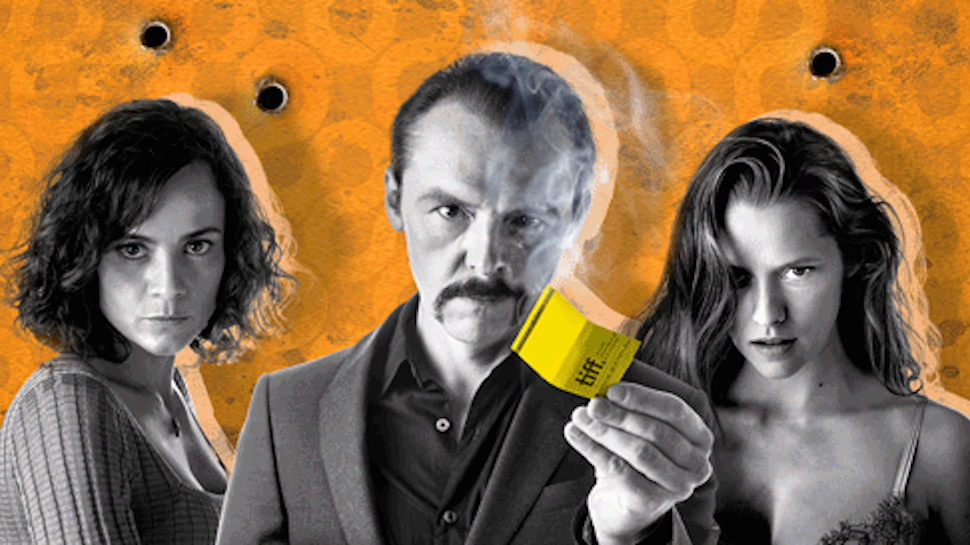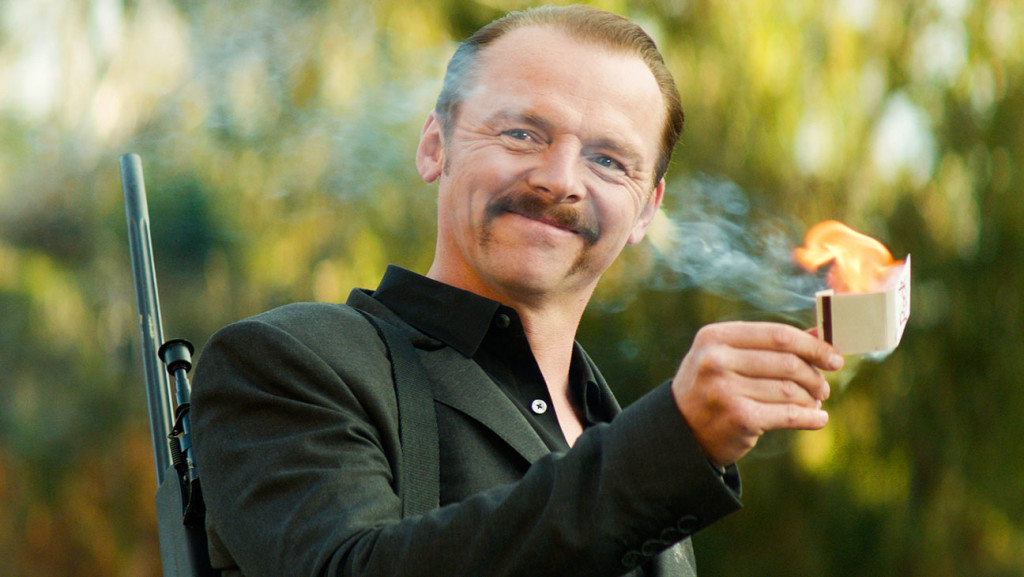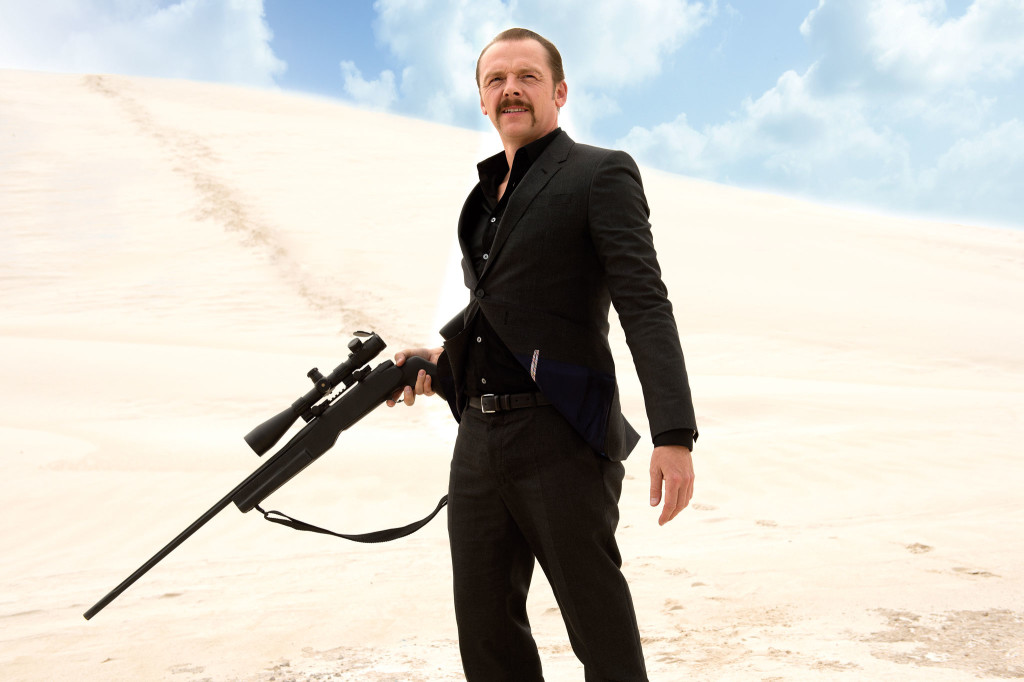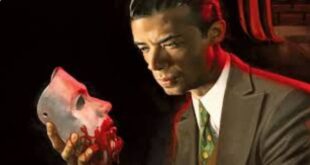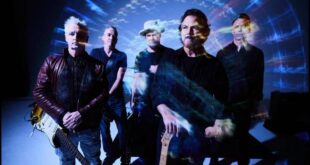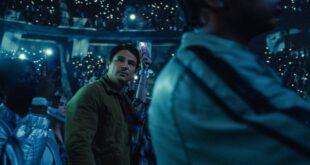During the press day for Kill Me Three Times, we were given the opportunity to chat with actor Simon Pegg and director Kriv Stenders. The dark comedy stars Pegg as a hitman who comes to take out a target only to discover three tales of “mayhem, murder, blackmail and revenge” in the small town. And of course madness ensues.
During our interview, the duo talked about Pegg’s departure of form with the role, how he made such a dispicable character funny and likable, the look of the character, the birth of the score, the tone of the film, and much more. You can also read our review of the film here, and you can watch the trailer here.
Here is the full transcription of our chat:
Welcome, and congrats on the movie. How evident was it to you guys on set what this final product would look and feel like? And how much did that play into what you were doing on set?
STENDERS: The script, when I first read it, presented itself quite strongly as something that I thought was a lot fun. It had a particular rhythm, a particular bite. It was kind of like a pop song or a rock song—you could just sort of feel the rhythm. So it was really just a matter of having fun with it. And getting the cast together and making sure that everyone was dancing to the same song. And Simon coming on board really gave us the platform from which to keep moving, and everyone was in sync from that point on I think.
PEGG: Well for me it was interesting for me because I came in at the very beginning. I very limited time, meaning that we had to shoot all of my stuff in during a certain period. Which meant that we shot the beginning of the film and the climax of the film in the same sort of—fortnight. And it so it was really fun to watch the final film and watch all of the constituent parts that I did being interlaced with everything else. Because the film is obviously multi layered and there’s different narratives. I got to work with everybody, but it was really fun to watch their stories. It was nice, because I had this little brief in and out, and then they just got on without me.
How was it to play a different kind of role than you have played in the past?
PEGG: It was fun. It was nice to do something different. One of the things that attracted me to the script, apart from the artful way that it was structured and written, was the opportunity to play someone contrary to what I have played in the past. Charlie was a delight on the page. To play someone who is so unapologetically bad, and yet kind of—the most likable person in the film. [Laughs] Which says a lot about the other characters. I just couldn’t resist it, I had to pack my bag and go to Perth immediately.
Can you talk about how you make someone who is inherently amoral also very charming to the viewer?
PEGG: I think it helps that everyone in Eagle’s Nest is a bit of an idiot. It’s kind of like you have to pick your allegiance. I suppose Alice and Luke are the most morally acceptable people, although they are up to no good—having an affair and stealing money and stuff. Charlie, as a villain, has a lot of fun about him. His amusement of it all is parallel to the audience’s own amusement. They come in with Charlie, and they get to look at the craziness that’s going on that small town with him and be as bemused, disgusted, and maddened by it as he is. Which is an interesting angle for the audience to have their POV be the bad guy. If Charlie wasn’t’ fun, it would be horrendous. It would be like watching Wolf Creek. Although the bad guy there is kind of fun, but in a way that’s horrific. In a film that has this much violence, If it was just you know—sort of lead pipe cruel—it would be really hard to watch. So it has to be heightened and made fun to be more palatable.
How did you conceive the look for Charlie?
PEGG: Kriv and I sort of came up it together before shooting. He had a few phone calls before we officially met in the flesh and talked about Charlie and what he would look like. I pushed for the Handlebar Mustache, which I regretted immediately because I couldn’t wear any of my own clothes [Laughs]. But yeah—it was just an idea that we had. I realized talking to Kriv that we wanted this sort of incongruous figure. He’s the grim reaper; he looks as incongruous in that setting as a man with a cloak and scythe. And Charlie has no interest in being stealthy. He’s very brazen in what he does. He clearly looked at the big book of hit men and said “I want to look like that” [Laughs].
Can you talk about how the music in the film came about?
STENDERS: Yeah, the composer is an Australian, fella by the name of Johnny Klimek. I was a big fan of Johnny’s work before this—he has worked with the Wachowskis, Tom Tykwer, among others— He did the soundtrack to Run Lola Run, which is one of my favorite soundtracks and films of all time. One of the ways that I was pitching this movie to the crew was by saying “Look, think of this as an American move that just happens to be being shot in Australia”. And I said the same thing to johnny. I wanted to make an international movie. I wanted it to bee like a sports car—I wanted it to look good, move fast, and be fun to ride. And as I said before, This script read to me like a rock song. It had this great pulse, a great rhythm to it. It had a great beginning, some great choruses, a great bridge, a few great solo’s, with a fantastic finale. We were trying to find a kind of musical hook to hang the film on. And we tried a few things. We tried this saxophone thing, because there’s kind of an 80’s vibe to the film, but we kind of threw that away.
PEGG: That’s very Lethal Weapon of you. [Laughs]
STENDERS: but then we eventually got kind of stuck on the idea of this sort of surf guitar. And that was the kind of switch that we were trying to turn on. After that everything just seemed to gel. And the film seemed to sort of—fuse. It really fun when you find that missing ingredient.
The script has a very complex narrative structure. How much was laid out in the script, and how much was found in the shooting and editing of the film?
STENDERS: The script was very much told in three chapters. That conceit was inherent in the architecture of the film. But something interesting in the edit happened—well two things actually. In the original script, Charlie only appears in the beginning and ending of the film. Whenever we saw Simon [on screen] we thought, “wow. Simon is great! I wish he was throughout the whole film.” So what we realized in the edit was that because it was so precisely plotted and so precisely structured—when you are playing with time in this kind of way—It’s actually a very interesting construction. Because you can actually take a part that you thought was fundamental and couldn’t move, and you can actually move it—and it still worked. Because you are still playing with what information audiences learn and when they learn it. It was very compartmentalized. So we ended up making this decision to try and weave Charlie throughout the whole story, which wasn’t in the script. We kept the sort of “looping back” idea in tact, but we just ended up getting a lot more of Simon in there [Laughs].
What was the toughest scene to film during the shoot?
STENDERS: I think that Beginnings and Endings are really tough. Because you really have to know where you want to the audience to be at the begging and the end, and that’s something that’s really hard to predict sometimes. So I find them had to shoot—or kind of get right—but you have to really follow your instincts. And because of Simon’s schedule, we had to shoot everything out in the first two weeks, which was obviously
PEGG: A pain in the ass [Laughs].
STENDERS: Which we were more than happy to do, because we were so excited that Simon said yes [to the project]. But that’s not just for this film—but for every film—beginnings and endings are very hard.
PEGG: You kind of sometimes feel like—if you shoot the beginning at the beginning, which you often do—you sometimes feel like at then end you want to go back and shoot the beginning again, once you have got the whole film. In a weird way, the beginning should always be the last thing that you shoot.
You were there for about two weeks. Were you working on something else in Australia?
PEGG: No, I had come to the end of a very, very busy year. I had been traveling around a lot, and I had been away from my family a lot. And this script landed in my lap in the worst time, because I couldn’t say no to it. It was such a fun read. It was one of those scripts that was done in the time it would take to watch it. I didn’t want to be away from my family again, but I also didn’t want to say no. So I basically was incredibly cheeky and said “Yes, but…”, because saying no wasn’t even an option. But they said “lets work on it”, and thankfully, I was accommodated. Of course I went out and met with everybody: Kriv, the whole crew, and the cast. We immediately bonded. We all stayed in this casino in Perth, we all went to Margret River, and it was sort of like this camp. I wanted to stay when I finished [Laughs].
Do you guys have a favorite moment from being on set?
STENDERS: For me it was every moment, especially with Simon. You know, this job can be so great sometimes, when you can have a great script and a great crew. As Polanski said, “It’s the best train set in the world”. But always shooting on locations can be hard, because we had a lot of travel, which took time out of the shooting schedule. So there was always a time pressure, which can be challenging. But that also kind of—focuses everyone—and that pressure is healthy. I loved shooting everything, especially that ending—so yeah.
PEGG: I really enjoyed shooting the fight scene with Sullivan [Stapleton]. Just because it was messy—I really got along well with silly—and getting stabbed through the hand for the second time in my career [Laughs]. It was Enormous fun, whenever you can get down and dirty like that. And playing a character that is just so cool in the face of being such an asshole—he’s such a bastard—and it’s so great. We came up with the idea—well I won’t give it away—but there’s a point in the movie when Charlie sets something on fire, and as he’s walking as away in the classic movie star pose, he realizes that he cant light his cigarette. So he’s kind of bummed. Even though he killed somebody, he cares about not being able to light his cigarette.
What is your approach to balancing your smaller more personal projects, with the big studio projects that you get offered?
PEGG: It’s kind of like juggling—you are constantly throwing and catching—and sometimes you will drop it because you will get the timing wrong. I obviously always want to make time for my own stuff with Edgar [Wright] and Nick [Frost], but at the same time I want the opportunity to do something like this when it comes along. Similarly I love working on big movies like Mission: Impossible and Star Trek, so it’s really just a juggling act. You just wing it, it’s the only thing that you can do. And I want to do films like this, smaller enterprises such as this which are always fast, and passionate, and kind of commitment from everybody. It’s not to say that it’s not like that with bigger films, but there’s a bigger crash mat and bigger resources, as well as a longer period of time. But at the same time, doing a film like this was so much fun—it was intensive and really gratifying—I don’t want to not do those films as well.
Since you said the two words–Mission: Impossible—if we could take a tangent. I mean that trailer yesterday just blew up, absolutely insane…can you talk about the plane scene and how you get excited seeing this stuff as audience member?
PEGG: I was on the plane actually. They did a couple of circuits around the airfield, you know because it would have to take off, obviously have to fly in a circle, and land again. Because I had shot my stuff at a different time, they were like; “you want to come on?”, and I went on that day of set. I did one when I sat in the cockpit, just to watch it go around, and one where I sat and watched Tom [Cruise] outside on the monitor and was there when the back door opened. And uh—it was hilarious. It was just like—the only way that he could top climbing the tallest building in the world is to be on something that isn’t attached to the ground and higher up. And it was like, “well that’s a plane”, the only thing you can do is an airplane. And he did it. [Laughs] They just like, gaffer taped him to the side of it [Laughs] and off he went. It was extraordinary. And it’s funny—when you do it in a working day it’s “wow, that’s amazing, like let’s move on, what’s next”—Whereas you see it in the trailer and it’s like, Fuck, that’s insane [Laughs]! So I’m very excited for audiences to see it. I only wrapped two weeks ago, so there’s stuff that’s not in the trailer, stuff that’s—there are set pieces that aren’t even glimpsed in the trailer that are extraordinary—so, yeah.
Are you in tune with the fan reaction is hitting social media?
PEGG: From a distance.
What got you excited about the opportunity to write the next Star Trek movie? Can you talk in general terms of what you want to bring to it, sensibility wise?
PEGG: Well, I don’t want to talk about it too much because we are here for this one obviously, but I yeah. It was just kind of conversations I was having between J.J. and Bryan Burke and they decided to kind of restart the process. And because I had been on set with Burke [For MI5], he said “maybe you should come on and write it with Doug, and Justin, and him, and Lindsey Webber”. I kind of, I felt like—no, I don’t want to, it’s too much pressure—but we just want to take it forward with the spirit of the T.V. show. You know, it’s a story about frontierism, and adventure, and optimism, and fun. That’s where we want to take it. You know where no man has gone before—where no one has gone before—ostensibly corrected, for a slightly more enlightened generation. But yeah, that’s the mood at the moment.
Did you learn about anything about yourself when making this film?
STENDERS: I think as a filmmaker you are always learning. I mane you look at Kurasawa—he made something like 30 films, and his final films were brilliant, there’s a reason for that—because you get better as you do more. That’s what I love about the process. I feel like I learned so much more about every part of the process—the craft, working with actors, telling this kind of story, shooting it, editing it. There are a million things that you pick up and learn along the way. And I just feel so lucky to have had a great cast on this film—not that I haven’t on my previous films—but this was just so much fun working with a more international cast. And just having great actors that are like finely tuned watches that wew just all perfectly in time.
PEGG: Never, ever have a handlebar mustache [Laughs]. Yeah, I learn something on every film that I do. As Kriv said, you do improve in increments as you do more work—there’s no substitute for experience. It was great to work in a place that I have never worked before. Western Australia is such a beautiful and remarkable part of the earth. So it was a real education to see a greener Australia, topologically a different Australia. And to work with International crews; It all goes into your bank of experience, which can only make you a better filmmaker, writer, actor.
How did you feel about handling the guns in this film?
PEGG: We had a fun day shooting that big rifle that is in the film. We were in this sort of—disused psychiatric hospital. Not the first one that I have been in actually [Laughs] to shoot. Yeah, and we had a bit of gunplay. But it’s always a serious business when you have firearms on set, and there are always rigorous precautions around that. Like any kid growing up watching Star Wars and cowboy films, it’s fun to do this. But when you are actually working with firearms, you have to be careful. Although, having that scope on that rifle—the amount of people that I zeroed in on when I was up on that ridge. Just having those people down there I couldn’t help but getting people in my sights [Laughs].
Kill Me Three Times is currently streaming on VOD, and will be hitting theaters on April 10th, 2015.
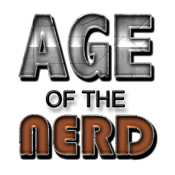 Age of The Nerd
Age of The Nerd
